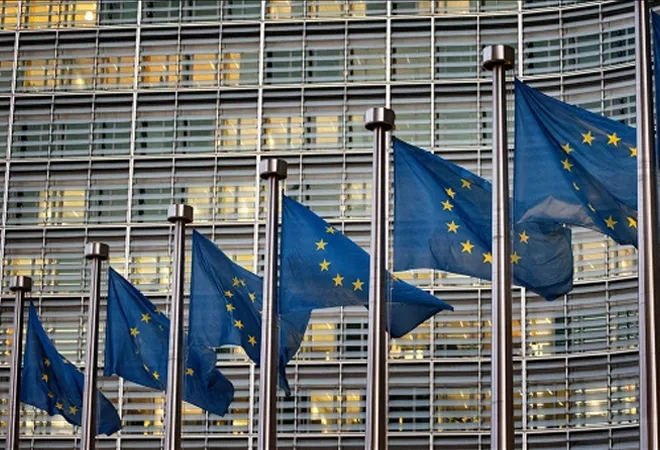-
CENTRES
Progammes & Centres
Location
As it hosts the EU-CELAC summit after eight years, the EU attempts to reorient it’s relations with Latin America in light of altered geopolitical realities.

On 17-18 July, some 50 leaders from the European Union (EU) and the Community of Latin American and Caribbean (CELAC) countries gathered in Brussels, Belgium, for a bi-regional summit.
A strategic bi-regional partnership between the two regions was signed in 1999, with the first meeting taking place that same year in Rio de Janeiro, Brazil. The last such summit—a format that acts as the primary forum for dialogue between the two regions—took place in 2015 in Brussels. Eight years later, the current summit transpired under a fundamentally altered geopolitical and economic landscape amidst increasing US-China strategic competition, the Russia-Ukraine conflict, and the EU’s green transition. This historic summit occurred under the six-month Spanish presidency of the Council of the EU, which has prioritised ties with Latin America given Spain’s historical and linguistic affinities with the region.
A strategic bi-regional partnership between the two regions was signed in 1999, with the first meeting taking place that same year in Rio de Janeiro, Brazil.
After decades of European neglect, the last few years have witnessed a number of efforts to scale up the partnership. In 2019, the EU adopted fresh Council Conclusions on EU-CELAC relations, and in 2022, an EU-CELAC roadmap 2022-2023 was released. In June this year, the EU published a New Agenda for Relations between the EU and CELAC. These policy documents were accompanied by a spate of visits from high-ranking EU officials such as Josep Borrell in 2022 at the EU-CELAC Foreign Ministers meeting in Buenos Aires, Argentina, where he dramatically declared 2023 as the “Year of Latin America in Europe”. Most recently, European Commission President von der Leyen visited Brazil, Argentina, Chile, and Mexico to lay the groundwork for the summit. In addition, in March, a new Digital Alliance was created between the two regions towards an inclusive and people-centric digital transition.
The elephant in the room at the summit was the EU-Mercosur free trade agreement, which has remained under negotiation for 20 years, and was agreed upon in principle in 2019. Yet the agreement still awaits ratification by EU member states such as France based on environmental concerns centering around deforestation in the Amazon rainforest.
With a combined population of over 700 million, the EU and the Mercosur countries comprising Brazil, Argentina, Uruguay, and Paraguay represent 10 percent of global population, but 20 percent of global GDP. The agreement is estimated to eliminate 4 billion euros worth of duties on European exports, demonstrating its immense potential.
The left-wing Lula da Silva’s election victory in the 2022 Brazilian election revived hopes for the agreement, yet differences have continued with Lula accusing the EU of protectionism with its many environmental conditions, and Argentinian president Alberto Fernández pointing out the agreement’s “asymmetries”. Moreover, three countries—Paraguay, Guatemala, and Argentina—will go to the polls this year, and political uncertainties may potentially become a further obstacle to deeper cooperation.
The agreement is estimated to eliminate 4 billion euros worth of duties on European exports, demonstrating its immense potential.
Besides Mercosur, the EU’s modernised agreements with Mexico and Chile that will replace the old agreements signed in 2000 and 2003 respectively also await ratification. The LAC countries are viewed as reliable partners in the EU’s quest for strategic autonomy, the diversification of supply chains, and a reduction in lopsided dependencies. Increasing Chinese and Russian influence also forms a part of the EU’s incentives to enhance ties with the region. From being a marginal actor, China surpassed the EU to become Latin America’s second-largest trading partner after the US in 2014. According to the World Economic Forum, China-Latin America bilateral trade in goods increased from US$12 billion in 2000 to US$315 in 2020 and is predicted to increase upto US$700 billion by 2035. On the other hand, EU-LAC trade in goods increased from 185 billion euros in 2008 to 218 billion euros in 2021.
Despite the grand build-up, the summit led to some disappointments.
Since the Russia-Ukraine conflict began, the Global South has emerged as a battleground for narratives and Europe has actively courted countries here to condemn Russia more strongly. The fact that LAC countries, most of which voted in favour of UN resolutions condemning the war, comprise a third of UN membership demonstrates their political importance. Predictably, the ghost of the Russia-Ukraine conflict hung over the summit proceedings, where disagreements over the joint communiqué eventually led to a watering down of condemnation of Russia’s actions in Ukraine (the communiqué did not even name Russia) and clouded over other ambitions. Several other issues such as the Malvinas/Falkland islands dispute and colonial reparations also made their way to the communiqué and distorted the much-touted goal of enhancing strategic cooperation.
The fact that LAC countries, most of which voted in favour of UN resolutions condemning the war, comprise a third of UN membership demonstrates their political importance.
Yet this is expected given how decisions within the CELAC are based on consensus between all 33 member states—a requirement that the EU is all too familiar with—and the likelihood of spoilers is high in a community as heterogeneous. Besides, an EU-CELAC Roadmap 2023-2025 was adopted to lend direction to the relationship over the coming years.
With 50 percent of the planet’s biodiversity, feasible geographic conditions, and a wealth of natural resources and critical raw materials such as lithium; the region boasts of unique potential in areas such as the production of green hydrogen, both important for Europe’s green transition and in the global battle against climate change.
Chile, Argentina, Bolivia, and Peru contain about two-thirds of lithium reserves and produce half the global supply, which is why China has invested US$4.5 billion in lithium production in the region. Europe too is investing in the extraction and production of lithium given the region’s technological limitations in lithium mining.
In this context, the EU-LAC Global Gateway Investment Agenda (GGIA) was launched with a focus on “a green transition, inclusive digital transformation, human development, and health resilience”. This is part of the EU’s Global Gateway programme, widely considered as an alternative to China’s Belt and Road Initiative. The agenda includes over 130 projects in the region, ning from cooperation on critical raw materials to telecoms networks to the electrification of public transport and so on, with commitments of over 45 billion euros until 2027.
The EU is the largest foreign investor and donor in the region as well as the third-largest destination for Latin American exports.
Some more deliverables included the signing of energy cooperation agreements with Argentina and Uruguay, and a Memorandum of Understanding (MoU) on supply chains for critical raw materials with Chile.
The EU is the largest foreign investor and donor in the region as well as the third-largest destination for Latin American exports. A 2021 survey conducted by Latinobarometro revealed that 48 percent of those surveyed felt their country would benefit most from increased ties with Europe as compared to 19 percent for North America and 8 percent for the Asia-Pacific region.
Spanish Foreign Minister José Manuel Albares referred to Latin America as “the most Euro-compatible region on the planet”. But as the EU navigates choppy international waters and as Brazil gears up to take over the G20 presidency from India, the ability to harness rhetoric and complementaries into tangible progressive outcomes will be the real test.
Shairee Malhotra is Associate Fellow with the Strategic Studies Programme at the Observer Research Foundation.
The views expressed above belong to the author(s). ORF research and analyses now available on Telegram! Click here to access our curated content — blogs, longforms and interviews.

Shairee Malhotra is Associate Fellow, Europe with ORF’s Strategic Studies Programme. Her areas of work include Indian foreign policy with a focus on EU-India relations, ...
Read More +